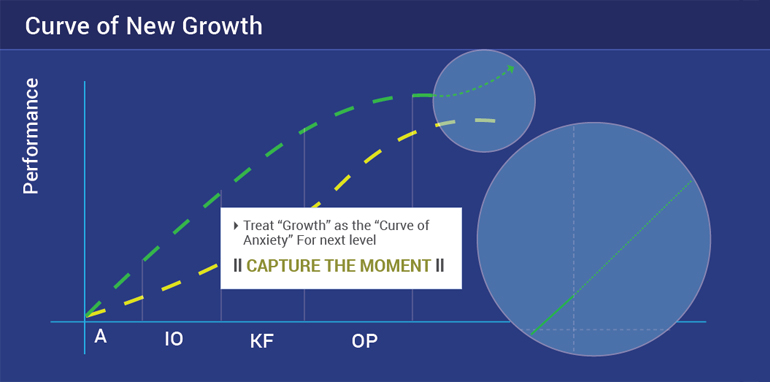Timing is Everything Series: Intro, Anxiety, Information Overload, Knowledge Formation, Optimum Performance, Growth, Stagnancy, or Decline, (Structured vs. On-demand Learning coming June 14th)
Growth, Stagnancy, or Decline
Once optimum performance is reached, learners can either grow, stagnate, or decline in their on-the-job performances. However, we can use talent development principles and learning strategies to ensure continued growth rather than stagnancy or decline:

Treat Optimum Performance as New “Curve of Anxiety”
One clever way to ensure that high-performing employees continue to improve and grow is to treat their achievement of optimum on-the-job performance as an opportunity to motivate them for continued growth by giving them renewed expectations, additional responsibilities, and a new drive to advance their careers.
Of course, this is exactly how we treat our learners when they are being on-boarded as new employees or when they are being enrolled into a new training program: we need to treat optimum performance as a new “curve of anxiety”, and instill a healthy amount of anxiety in them so they can strive to reach new heights in their key competencies and careers.1
Grooming Tomorrow’s Leaders
Employees that have learned nearly everything there is to learn, and have achieved nearly everything there is to achieve in their respective roles need a next step, a terminal objective to strive for and look forward to: in most cases, they need a clear path towards a promotion.
Two vital techniques for grooming tomorrow’s leaders:
- Leadership Development: Corporate training expenditures are highest on leadership development,2 and for good reason: investing in tomorrow’s leaders today is a hallmark of sustainable business development.3
Leadership development courses are often offered as classroom training in a number of different subjects, and can be a great way of instilling leadership qualities in high-potential employees. For an example, see our leadership Course Catalog 2016 - Career Development Plan: Drafting career development plans for high-potential employees is shown to increase employee engagement and reduce turnover in key job roles.4 This can become an impetus for employees to continue to grow and improve in order to attain future promotions.
We will be sharing information on decreasing the learning curve on our blog through the Timing is Everything series, but to read more now download the Timing is Everything White Paper!
Download the Timing is Everything White Paper
Sources:
- Gardner, W. & Schermerhorn, J. (2004). “Unleashing Individual Potential: Performance Gains through Positive Organizational Behavior and Authentic Leadership.” Organizational Dynamics, 33(3), 270-281.
- The Association for Talent Development. (2015). “The Association for Talent Development State of the Industry Report 2015.”
- Rainey, L. (2010). “Sustainable business development: inventing the future through strategy, innovation, and leadership.” Cambridge University Press.
- Foong-ming, T. (2008). “Linking Career development practices to turnover intention: The mediator of perceived organizational support.” Journal of Business and Public Affairs, 2(1), 1-16.




